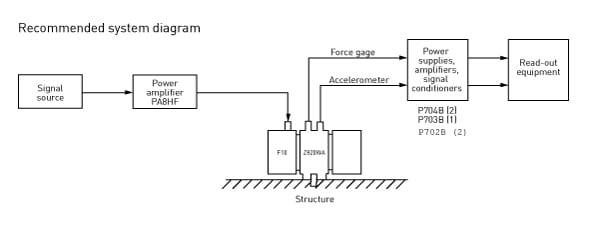Question
Structural excitation can be accomplished using both instrumented hammers and shakers. Which is the best choice?
Answer
The subject of structural excitation and how to best accomplish it is the subject of many industry technical papers. The user is best advised to consult available literature for best results. Here are just a few introductory "basics":
An instrumented modal hammer (such as the Endevco® 2302 series) is perhaps the most common instrument used to achieve structural excitation. The hammer is the most convenient tool and requires minimal setup time. It is useful for obtaining rough data, though on many structures, a high degree of measurement accuracy is achievable. A modal hammer also imposes certain limitations on parameters such as frequency response and input force control. For example, too much force will drive a structure into the non-linear region.
Endevco 2302 series instrumented hammers are ergonomically designed to allow the user better hammer control and to reduce the number of "double hits", with the added benefit of acceleration compensation for improved data accuracy.
Use of a shaker for structural excitation involves a slightly more complicated set-up, though is not without its added rewards, as illustrated in Figure 1. The shaker provides a controlled force level and can operate at very high frequencies. Use of the shaker allows the user to accurately and conveniently determine the natural resonant frequency(s) of the structure by sweeping the exciter's frequency while monitoring its response. In addition, higher frequency shakers allow a user to evaluate smaller scale models of designated test structures. A modal impact hammer has an upper frequency range of around 8 kHz, while a piezoelectric shaker, such as the Wilcoxon Research F7-1, can offer frequencies as high as 80 kHz.
Larger structures exhibit local modes and thus require a force input at several locations to sufficiently excite all modes.
With the addition of a transducer that measures both acceleration and input force, known as an impedance head, it is possible to observe both the force and response at its point of attachment to a structure. This point of attachment is referred to as a driving point impedance and is derived from the transfer function achieved between the two aforementioned signals.
Complex structures often exhibit dual modes occurring at the same frequency. This phenomenon is often referred to as "repeated roots." These modes can be separated with the use of multiple shakers, since each mode will exhibit its own distinct phase angle.
For some structures, such as plastics and composites, damage is more likely to occur from the force of a hammer strike, thus deferring to use of a shaker as the most desirable excitation source.

Figure 1
A structural excitation system, incorporating the use of the Wilcoxon Research F10 shaker with impedance head. The shaker requires a power amplifier and a signal source for proper operation.